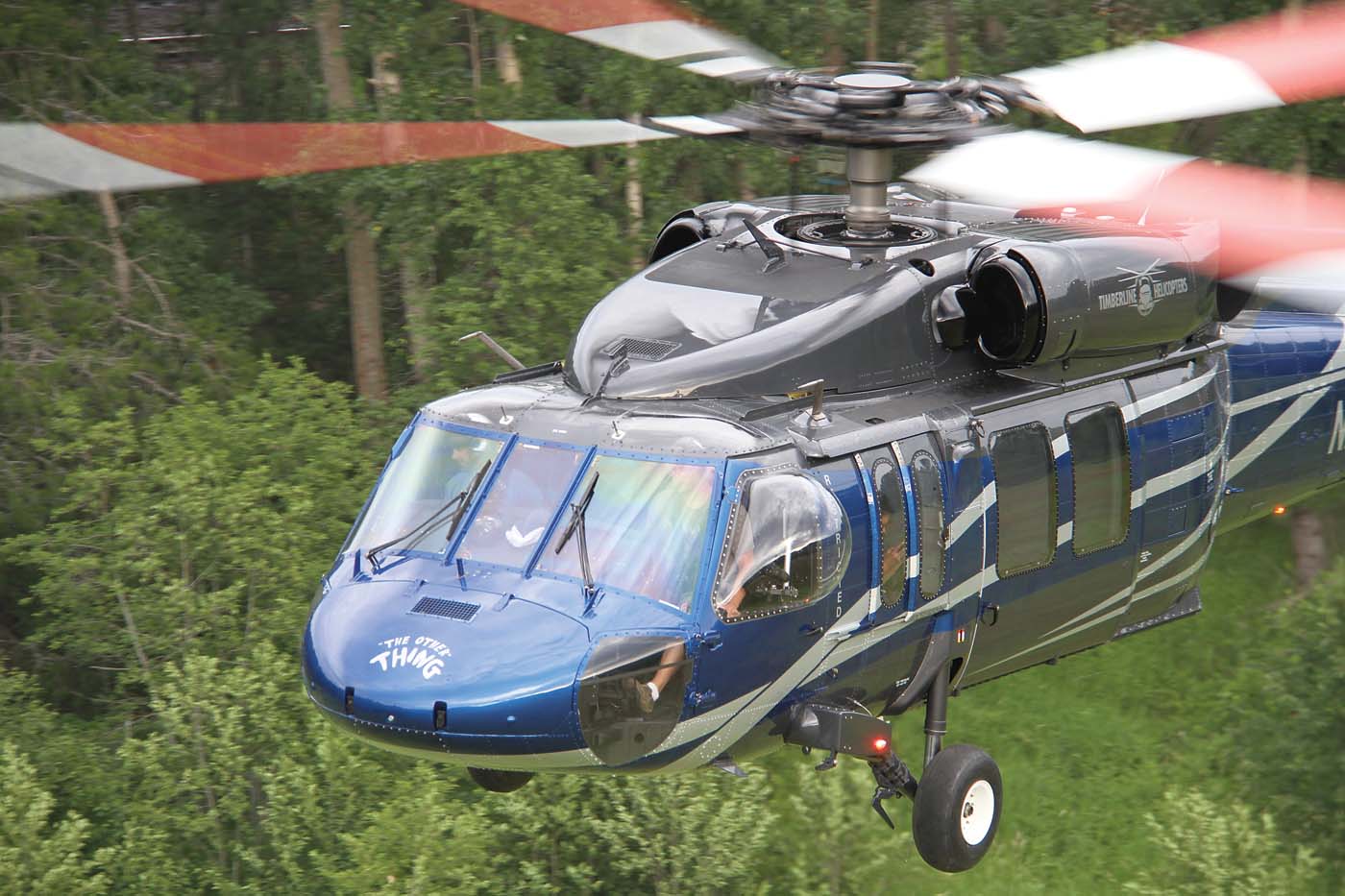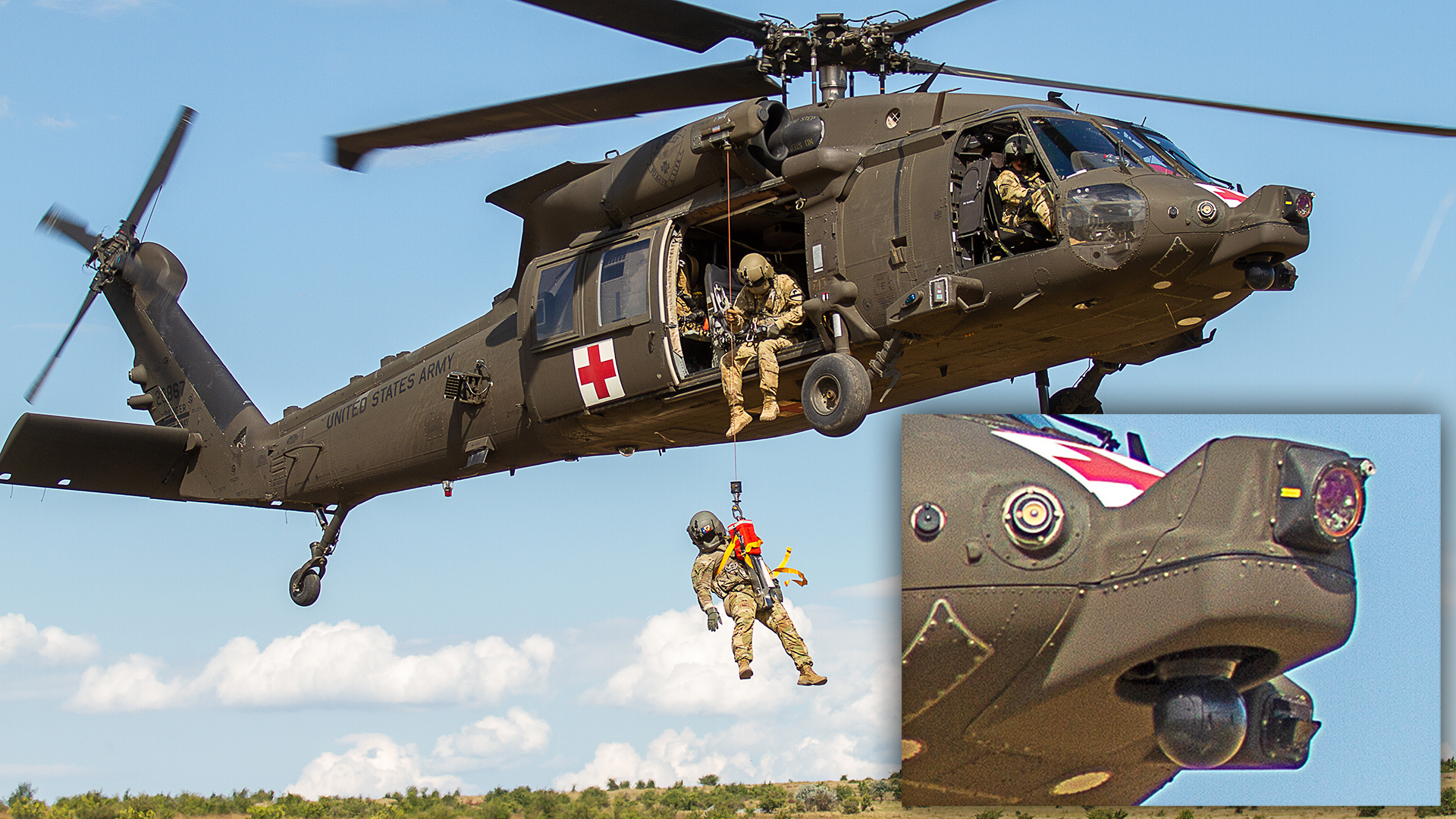Check out the Flexibility and Strength of the UH-60 Blackhawk Helicopter
Check out the Flexibility and Strength of the UH-60 Blackhawk Helicopter
Blog Article
Discover the Adaptability of the UH-60 Blackhawk
The UH-60 Blackhawk is an amazing example of modern armed forces design, embodying convenience across a large array of operational contexts. From army transport to medical evacuation and reconnaissance objectives, its layout fits various roles while emphasizing rapid implementation and versatility. The sophisticated avionics and robust capacities of the Blackhawk not just improve its functional performance in difficult atmospheres yet additionally prolong its energy in humanitarian initiatives. Understanding its diverse applications motivates a more detailed exam of exactly how this helicopter remains to develop and influence military and civilian operations alike.
Background of the UH-60 Blackhawk
The UH-60 Blackhawk, a flexible utility helicopter, was established in the late 1970s by Sikorsky Aircraft to fulfill the U.S. Military's demand for a modern tactical transport helicopter. This effort occurred in reaction to the limitations observed in the previous generation of helicopters throughout the Vietnam War. The united state Army sought an airplane that can carry out a variety of objectives, including troop transportation, medical discharge, and logistical assistance, while also exhibiting boosted survivability and efficiency.
The Blackhawk was developed with innovative modern technology and design, including a twin-engine configuration, a four-bladed rotor system, and a robust airframe. Its initial flight happened in 1974, and it was officially introduced into solution in 1979, promptly ending up being a critical possession for the united state armed force. The helicopter's versatility enabled it to be made use of in various combat and altruistic operations, showcasing its effectiveness in diverse environments and objectives.
Over the decades, the UH-60 has actually undertaken continual upgrades and modifications, ensuring its importance in contemporary warfare. Its heritage has solidified its condition as a foundation of military aviation, mirroring a dedication to technology and operational quality.
Trick Attributes and Specs
Frequently lauded for its engineering prowess, the UH-60 Blackhawk flaunts a series of essential attributes and specifications that enhance its functional capabilities. This flexible helicopter is powered by 2 General Electric T700-GE-701C engines, each efficient in generating 1,800 shaft horsepower, enabling it to accomplish a maximum cruise ship rate of roughly 150 knots.
The aircraft's distinct design includes a four-blade major rotor system and a four-blade tail rotor, adding to exceptional ability to move and stability. With an optimum departure weight of 22,000 pounds, the UH-60 can bring up to 11 soldiers or equivalent freight. Its advanced avionics suite supplies enhanced situational awareness and navigating, vital for numerous mission accounts.
The Blackhawk features a durable airframe constructed from innovative composite products, providing boosted durability and resistance to little arms fire. UH-60 Blackhawk. Additionally, the helicopter is equipped with an electronic fly-by-wire control system, improving responsiveness and lowering pilot workload. With an array of about 600 nautical miles and the capability to operate in diverse atmospheres, the UH-60 Blackhawk remains a critical asset in modern-day military procedures
Armed Force Applications
With its advanced features and specifications, the UH-60 Blackhawk has actually come to be a foundation of military operations around the world. Developed for convenience, it satisfies a broad array of roles ranging from troop transport to clinical emptying. The helicopter's capacity to run in diverse environments-- whether in fight areas or tough terrains-- guarantees it remains an indispensable possession for modern-day army forces.
The UH-60's robust style permits the transportation of approximately 11 troops, sustaining rapid release during important objectives. Its advanced avionics and navigating systems boost situational awareness, enabling pilots to execute intricate procedures look these up also in adverse weather. The helicopter is outfitted with protective systems to safeguard versus risks, making sure the safety of personnel onboard.

Altruist Missions

Humanitarian objectives commonly rely on the UH-60 Blackhawk for its exceptional versatility and quick response capabilities. This multi-role helicopter has actually confirmed very useful in different circumstances, including catastrophe relief, clinical evacuations, and logistics sustain in inaccessible or remote locations - UH-60 Blackhawk. Its capacity to transfer supplies and personnel promptly allows for timely treatments during crises, considerably boosting the efficiency of humanitarian operations
The Blackhawk's sophisticated avionics and durable design enable it to run in tough settings, such as negative weather condition problems or sturdy surfaces. Furnished with raising systems and clinical evacuation capacities, the helicopter can fetch injured individuals from hard-to-reach areas, guaranteeing punctual medical interest. Additionally, its capacity to quickly deploy aid materials, consisting of food, water, and essential tools, makes it a critical pop over here asset in large alleviation efforts.
Moreover, the UH-60 Blackhawk's adaptability permits different setups customized to particular objective demands, whether it involves carrying emergency situation responders or supplying essential resources to affected populations. Its functional history in humanitarian goals underscores the airplane's crucial duty in saving lives and reducing suffering during all-natural calamities and humanitarian dilemmas, showcasing its sustaining dedication to sustaining worldwide alleviation initiatives.
Future of the Blackhawk
The future of the UH-60 Blackhawk shows up promising as improvements in innovation and evolving objective requirements form its continued importance in armed forces and noncombatant procedures. As armed pressures around the world look for to update their fleets, the Blackhawk is going through upgrades that boost its capacities, consisting of boosted avionics, progressed communication systems, and boosted payload capabilities.
The assimilation of unmanned systems and fabricated intelligence is poised to transform operations. Future variants might integrate autonomous flight capabilities, enabling increased functional versatility and reduced threat to workers throughout high-threat objectives. Furthermore, hybrid-electric propulsion systems are being checked out to boost gas performance and lower the ecological footprint of army operations.
International collaborations and export possibilities are likewise increasing the Blackhawk's global footprint. As nations purchase updating their air movement capacities, the Blackhawk's flexibility makes it a positive option for numerous functions, from troop transport to medical discharge and search-and-rescue operations.
Conclusion
The UH-60 Blackhawk exemplifies flexibility in army air travel, successfully satisfying roles ranging from army transportation to clinical emptying and reconnaissance. As operational demands evolve, the ongoing development and assimilation of the Blackhawk will ensure its importance and effectiveness in dealing with future obstacles in both private and army contexts.

With its sophisticated functions and specs, the UH-60 Blackhawk has come to be a cornerstone of armed forces procedures throughout the world. As army approaches evolve, the UH-60 Blackhawk continues to play a crucial function in boosting functional efficiency and ensuring mission success across the theaters of interaction.
Altruistic missions usually rely on the UH-60 Blackhawk for its exceptional flexibility and fast action abilities. UH-60 Blackhawk.The UH-60 Blackhawk exemplifies convenience in armed forces aeronautics, successfully satisfying duties varying from army transport to clinical emptying and reconnaissance
Report this page